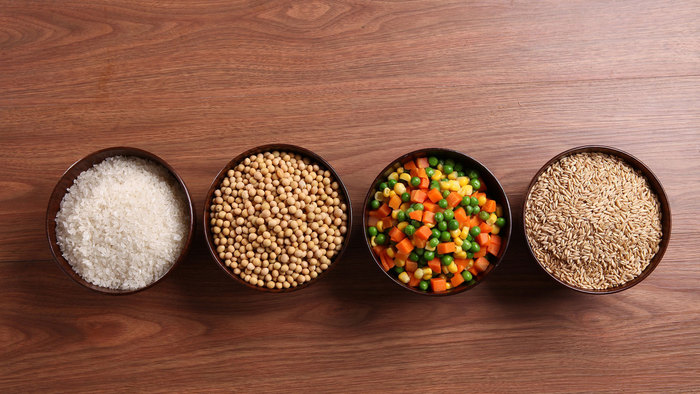Blog »
What's so great about dietary fibre?
Published 19 February 2020. Written by Chris Worfolk.

We're often told that to manage our nutrition correctly, we should include plenty of fibre in our diet. But what exactly is fibre and why do we need it? In this article, we'll dive into the topic.
What is fibre?
Dietary fibre, also spelt fiber on the other side of the pond, is categorised as a carbohydrate, alongside sugars and starch. Where it differs, though, is that the human body cannot fully break it down.
When you eat most carbs, the substance is broken down into energy. However, with fibre, the body cannot do this. Therefore much of it leaves the body in the stool.
There are two types, soluble and insoluble. The type has an important effect on how we digest fibre.
The digestion process
Most food that we consume is digested in the small intestine. It passes down our gastrointestinal tract and is gradually broken down into its constituent parts until being absorbed by the body.
But, as we discussed, this is not the case with fibre. Fibre makes it all the way to the large intestine. For soluble material, the bacteria living there attempts to ferment it. This is somewhat successful and allows the body to squeeze some more nutrition out.
For insoluble material, the bacteria is unable to ferment it, and it will leave the body intact.
The differentiation between the two is important for explaining the digestion process but has no relevance in our food choices as both types of fibre are found in the food we eat.
What are the benefits?
Fibre contains a bunch of good stuff. In the case of soluble material, we can extract some of the nutritional value from it, which has a diverse range of benefits depending on the food consumed.
But even the material that is not broken down has a purpose.
Fibre acts as a bulking agent, holding our stool together, and making it more regularly. So, if you are looking to avoid the runs, this is a great place to start.
Second, it can help us eat less. A lot of the material passes through the body and out the other end. But it still takes up space in the stomach and intestines, thus making us feel full. You could almost consider it as a natural alternative to a gastric band.
Where do I get it from?
Fibre comes from plants. There is plenty of it in whole foods, but it tends to be lost in processing. So, for example, wholemeal bread typically contains three times as much fibre as white bread.
Good sources of fibre include:
- Wholemeal bread and wholewheat pasta
- Potatoes with the skin on
- Beans, lentils and chickpeas
- Fruit, such as berries, pears, apples, bananas
- Vegetables, such as carrots, broccoli, sweet potato
Often, the easiest way to get more fibre into our diet is with healthy swaps. For example, swapping white rice for brown rice, or by leaving the potato skin on when we prepare them.
Conclusion
What is so great about fibre? It does have some important nutritional value. But it is also useful for helping us feel full, and for keeping our bowel movements regular. And nobody likes a surprise in the middle of a long run!
We can increase the fibre in our diet by adding more fruits and vegetables, and by making some healthy swaps that replace processed foods, such as white bread, for whole-grain foods.